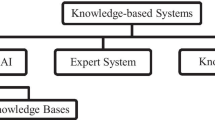Abstract
The goal of this study was to assess the utility of near infrared (NIR) spectroscopy for the determination of content uniformity, tablet crushing strength (tablet hardness), and dissolution rate in sulfamethazine veterinary bolus dosage forms. A formulation containing sulfamethazine, corn starch, and magnesium stearate was employed. The formulations were wet granulated with a 10% (wt/vol) starch paste in a high shear granulator and dried at 60°C in a convection tray dryer. The tablets were compressed on a Stokes B2 rotary tablet press running at 30 rpm. Each sample was scanned in reflectance mode in the wavelengths of the NIR region. Principal component analysis (PCA) of the NIR tablet spectra and the neat raw materials indicated that the scores of the first 2 principal components were highly correlated with the chemical and physical attributes. Based on the PCA model, the significant wavelengths for sulfamethazine are 1514, (1660–1694), 2000, 2050, 2150, 2175, 2225, and 2275 nm; for corn starch are 1974, 2100, and 2325 nm; and for magnesium stearate are 2325 and 2375 nm. In addition, the loadings show large negative peaks around the water band regions (≈1420 and 1940 nm), indicating that the partial least squares (PLS) models could be affected by product water content. A simple linear regression model was able to predict content uniformity with a correlation coefficient of 0.986 at 1656 nm; the use of a PLS regression model, with 3 factors, had anr 2 of 0.9496 and a sandard error of calibration of 0.0316. The PLS validation set had anr 2 of 0.9662 and a standard error of 0.0354. PLS calibration models, based on tablet absorbance data, could successfully predict tablet crushing strength and dissolution in spite of varying active pharmaceutical ingredient (API) levels. Prediction plots based on these PLS models yielded correlation coefficients of 0.84 and 0.92 on independent validation sets for crushing strength and Q120 (percentage dissolved in 120 minutes), respectively.
Similar content being viewed by others
References
Ritchie GE, Roller RW, Ciurczak EW, Mark H, Tso C, MacDonald SA. Validation of a near-infrared transmission spectroscopic procedure Part B: Application to alternate content uniformity and release assay methods for pharmaceutical solid dosage forms.J Pharm Biomed Anal. 2002;29:159–171.
Candolfi A, De Maesschalck R, Massart DL, Hailey PA, Harrington AC. Identification of pharmaceutical excipients using NIR spectroscopy and SIMCA.J Pharm Biomed Anal. 1999;19:923–935.
Ulmschneider M, Pénigault E. Direct identification of key intermediates in containers using Fourier-transform near-infrared spectroscopy through the protective polyethylene primary packaging.Analysis. 2000;28:136–140.
Otsuka M, Katol F, Matsuda Y, Ozaki Y. Comparative determination of polymorphs of indomethacin in powders and tablets by chemometrical near-infrared spectroscopy and X-ray powder diffractometry.AAPS Pharm Sci Tech. 2003;4:E19.
Buckton G, Yonemochi E, Yoon WL, Moffat AC. Water sorption and near IR spectroscopy to study the differences between microcrystalline cellulose and silicified microcrystalline cellulose before and after wet granulation.Int J Pharm. 1999;181:41–47.
Rantanen J, Rasanen E, Tenhunen J, Kansakoski M, Mannermaa J, Yliruusi J. In-line moisture measurement during granulation with a four-wavelength near infrared sensor: evaluation of particle size and binder effects.Eur J Pharm Biopharm. 2000;50:271–276.
Lodder RA, Selby M, Hieftje gM. Detection of capsule tampering by near-infrared reflectance analysis.Anal Chem. 1987;59:1921–1930.
Derbyshire HM, Feldman Y, Bland CR, Broadhead J, Smith G. A study of the molecular properties of water in hydrated mannitol.J Pharm Sci. 2002;91:1080–1088.
Drennen JK, Lodder RA. Nondestructive near-infrared analysis of intact tablets for determination of degradation products.J Pharm Sci. 1990;79:622–627.
Gustafsson C, Nystroem C, Lennholm H, Bonferoni MC, Caramella CM. Characteristics of hydroxypropyl methylcellulose influencing compactibility and prediction of particle and tablet properties by infrared spectroscopy.J Pharm Sci. 2003;92:494–504.
Kuny T, Schatz C, Ulmschneider M, Marrer S, Leuenberger H. Non-destructive dissolution testing correlation.Dissolution Technologies. 2003;10:22–28.
Morisseau KM, Rhodes CT. Near-infrared spectroscopy as a nondestructive alternative to conventional tablet hardness testing.Pharm Res. 1997;14:108–111.
Reich G. Potential of attenuated total reflection infrared and near-infrared spectroscopic imaging for quality assurance/quality control of solid pharmaceutical dosage forms.Pharm Ind. 2002;64:870–874.
Otsuka M, Mouri Y, Matsuda Y. Chemometric evaluation of pharmaceutical properties of antipyrine granulates by near-infrared spectroscopy.AAPS PharmSciTech. 2003;4:E47.
Higgins JP, Arrivo SM, Thurau G, et al. Spectroscopic approach for on-line monitoring of particle size during the processing of pharmaceutical nanoparticles.Anal Chem. 2003;75:1777–1785.
Fahmy R, Marnane W, Bensley D, Hollenbeck G. Dissolution testing of veterinary products.Dissolution Technologies. 2001;8:8–14.
Du J, Hoag SW. Characterization of excipient and tableting factors that influence folic acid dissolution, friability and breaking strength of oil- and water-soluble multivitamin with minerals tablets.Drug Dev Ind Pharm. 2003;29:1137–1147.
Kramer R.Chemometric Techniques for Quantitative Analysis. New York, NY: Marcel Dekker Inc; 1998.
Brereton RG. Chemometrics Data Analysis for the Laboratory and Chemical Plant. Chichester, UK: John Wiley & Sons Ltd; 2003.
Otto M. Chemometrics Statistics and Computer Application in Analytical Chemistry. Weinheim, Germany: Wiley-VCH; 1999.
Wu H, Lyon RC, Hussain AS, et al. Application of principal component analysis in assessing pharmaceutical formulation design: exploring the causal links between the tablet processing conditions and drug dissolution rate. AICHE Topical Conference: Discovery, Development, and Delivery of Medicines. AICHE Annual Meeting: November: 17–19, 2003: San Francisco, CA:635–642.
Beebe KR, Pell RJ, Seasholtz MB.Chemometrics: A Practical Guide. New York, NY: John Wiley & Sons Inc; 1998.
Author information
Authors and Affiliations
Corresponding author
Additional information
Published: September 20, 2005
The opinions expressed in this paper are of the authors' personal views. They do not necessarily reflect the views or policies of the FDA.
Rights and permissions
About this article
Cite this article
Tatavarti, A.S., Fahmy, R., Wu, H. et al. Assessment of NIR spectroscopy for nondestructive analysis of physical and chemical attributes of sulfamethazine bolus dosage forms. AAPS PharmSciTech 6, 15 (2005). https://doi.org/10.1208/pt060115
Received:
Accepted:
DOI: https://doi.org/10.1208/pt060115



